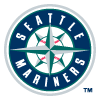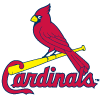This article is part of our Pitching 3D series.
The intrigue gets thicker as we travel further down the rabbit hole. The next six players are ranked No. 33 through 38 among starting pitchers, and they are valued within a span of 14 players on the overall rankings at RotoWire (overall rank in parentheses). These players represent the back-half of the SP3 circuit:
Hisashi Iwakuma (145)
Carlos Martinez (148)
Jordan Zimmermann (152)
Luis Severino (154)
Michael Pineda (158)
James Shields (159)
Right off the bat, we see a group of pitchers that varies from the formerly distinguished (Iwakuma, Zimmermann, Shields) to the new hotness (Car-Mart and Severino) and even the enigmatic (Pineda). One thing that they have in common is that these players are all ranked much differently now than they were a year ago.
As per usual, the major-league rankings are in parentheses for each category in the tables, with an asterisk (*) denoting a season in which the pitcher failed to qualify (minimum 162 IP) and ties
The intrigue gets thicker as we travel further down the rabbit hole. The next six players are ranked No. 33 through 38 among starting pitchers, and they are valued within a span of 14 players on the overall rankings at RotoWire (overall rank in parentheses). These players represent the back-half of the SP3 circuit:
Hisashi Iwakuma (145)
Carlos Martinez (148)
Jordan Zimmermann (152)
Luis Severino (154)
Michael Pineda (158)
James Shields (159)
Right off the bat, we see a group of pitchers that varies from the formerly distinguished (Iwakuma, Zimmermann, Shields) to the new hotness (Car-Mart and Severino) and even the enigmatic (Pineda). One thing that they have in common is that these players are all ranked much differently now than they were a year ago.
As per usual, the major-league rankings are in parentheses for each category in the tables, with an asterisk (*) denoting a season in which the pitcher failed to qualify (minimum 162 IP) and ties represented by a lower-case "t." The number of qualifying pitchers for each season were as follows:
2015 – 78 pitchers
2014 – 88 pitchers
2013 - 81 pitchers
(Ages are as of 4/3/15)
Hisashi Iwakuma (SP33, RHP, age 35)
Iwakuma is back with the Mariners, and though they signed him to a multi-year deal, the team's concern is reflected in the fact that Years 2 and 3 are club options at the relatively modest price of $10 million. If I thought he was going to make 30 starts then I would be bigger on Iwakuma, but the downside is great for a pitcher whose medicals threw up enough red flags to nix an offseason deal with the Dodgers.
| STAT | 2015 | 2014 | 2013 |
| ERA | 3.54 (33*) | 3.52 (41) | 2.66 (7) |
| WHIP | 1.064 (11*) | 1.050 (7) | 1.006 (5) |
| Ks | 111 (95t) | 154 (49t) | 185 (27) |
| Wins | 9 (71t) | 15 (15t) | 14 (17t) |
Iwakuma only threw 130 innings last season, a drop of 50 frames from 2014, which in turn was 40 fewer than he had pitched in 2013. It's a disturbing trend for a pitcher who is getting long in the tooth, especially considering the future health implications for the right-hander. The nice thing is that you know he won't walk anyone and he'll be an asset in the WHIP category as long as he's on the mound. Iwakuma is also predictable in the sense that you can bank on 7.5 K/9. He has a stable delivery that he repeats very well, and his splitter will keep him effective even as the velocity wanes, so long as he can bury the split.
Carlos Martinez (SP34, RHP, age 24)
He was used exclusively as a starter in the minors (69 of 70 appearances were starts), but Martinez was used out of the Cardinals' bullpen in 2013 and 2014 with occasional spot starts. Relief work didn't really agree with him, sample size caveats aside (117.2 MLB innings in 2013-14), considering his minor-league ERA of just 2.61 over 338.0 innings. The Cards ignored any warnings about innings jumps and threw Martinez into the fire last season, and the team had to be pleased with the results.
| STAT | 2015 | 2014 | 2013 |
| ERA | 3.01 (13) | 4.03 (69*) | 5.08 (79*) |
| WHIP | 1.286 (47) | 1.410 (85*) | 1.412 (74*) |
| Ks | 184 (22) | 84 (154t) | 24 (425t) |
| Wins | 14 (14t) | 2 (294t) | 2 (313t) |
The effects of an innings jump are something to monitor with young pitchers, so his being shutdown at the end of last season with an ailing shoulder is cause for concern. The team is being cautious with him this spring and Martinez still has another hurdle before being cleared for games, and fantasy managers will likely be on edge whenever the right-hander pitches this season. He has a powerful delivery that can get very unstable at times, and things could get ugly in a hurry if he tries to compensate for fatigue by cranking it up another notch. This is a high-beta player whose strikeout potential will likely inflate his value on draft day.
Jordan Zimmermann (SP35, RHP, age 29)
The market always seems to be behind on Zimmermann's value. For years, the fantasy community way wary of his lack of strikeouts, especially in light of his stated desire to get through at-bats in as few pitches as possible. He just kept on posting low ratios and modest strikeout counts, and the fantasy world barely took notice. He garnered some attention for winning 19 games in 2013, but a sudden strikeout jump in 2014 really put him on the map. The K rate, along with the low ERA of '14, boosted him up draft boards, and the right-hander responded with his worst season since becoming a full-time starter.
| STAT | 2015 | 2014 | 2013 |
| ERA | 3.66 (40) | 2.66 (12) | 3.25 (26) |
| WHIP | 1.205 (30) | 1.072 (9) | 1.088 (12) |
| Ks | 164 (41) | 182 (23t) | 161 (42t) |
| Wins | 13 (23t) | 14 (26t) | 19 (2t) |
It's a classic case of market dynamics: an underrated player has an outlier season, spurring the public to appreciate the baseline skills that have been there for years, the fantasy community gets overzealous and then when the player regresses back to career means, the frustration of that disappointing performance fuels the pessimism of the following draft season. It's true that Zimm is unlikely to help you in the K category, but he is sound as a pound in the other three cats that he can impact. It's smart to pair him with one of the ultra-high strikeout relievers (of which there are a dozen), to keep up the K-per-inning pace that is necessary to win the strikeout category these days.
Zimmermann has pitched at least 195 innings in four straight seasons, winning between 12 and 19 games in each. Last season was the first in which Zimmermann gave up more than a hit-per-inning (9.1 H/9) or more than a home run per game (1.1), but his walk rate stayed low - he hasn't walked more than 2.0 BB/9 since 2010. The velocity did dip a bit last season, which was especially odd for a pitcher that had averaged between 94.6 and 94.7 mph on his fastball for the past three seasons. Last year was a floor in terms of ERA and WHIP, yet he still ranked high enough to justify his current ADP in that floor season.
Luis Severino (SP36, RHP, age 22)
Severino had a successful introduction to the big leagues last season, starting 11 games for the Yankees and walking away with a sub-3.00 ERA. His peripherals were not as strong, buoying a 4.37 FIP with a penchant for the long ball. He pitched 161.2 innings between the majors and minors last season, making 30 starts across three different levels, so the Yankees will have a decently-long leash if they want to extend Severino this season.
| STAT | 2015 |
| ERA | 2.89 (12*) |
| WHIP | 1.203 (29*) |
| Ks | 56 (251t) |
| Wins | 5 (157t) |
The right-hander throws everything hard, including a fastball that averaged 95.8 mph off-set by a slider and changeup that can both break 90. It's an extremely narrow velocity band, with just seven mph separating his fastest and slowest pitches, on average, making it much easier for opposing batters to time his pitches and hit mistakes. He also leaned heavily on the slider, tossing the breaking ball with a 34-percent frequency in the majors last season, and the combination of high velocity and a heavy dose of breakers could put him at risk in the long-term.
Michael Pineda (SP37, RHP, age 27)
This guy is FIP's worst nightmare. His K-to-walk ratio is out of this world, including last season's count of 156 strikeouts against just 21 walks in 160.2 innings, but he took a beating like a piñata with 9.9 H/9 and as many home runs as he had walks allowed in 2015. He gains the asterisks for last season because he fell 1.2 IP short of qualifying, and he also had just 76.1 IP in 2014.
| STAT | 2015 | 2014 |
| ERA | 4.37 (66*) | 1.89 (2*) |
| WHIP | 1.226 (36*) | 0.825 (1*) |
| Ks | 156 (45t) | 59 (244t) |
| Wins | 12 (35t) | 5 (163t) |
Strikeout-to-walk ratio is one of my favorite stats, which would seemingly lead me to draft Pineda every chance that I could, but his injury history and inconsistent performance have left me on the sidelines when his name gets called on draft day. This is a high-upside player and a late-round roll of the dice could pay huge dividends, but to do so is to take a risk that he won't explode the team's ratios in the meantime. For the sake of comparison, consider that Pineda's ERA was right there with Andrew Cashner, a similarly-talented pitcher who had a similarly-frustrating season.
James Shields (SP38, RHP, age 34)
Shields is coming off a weird season. All three of his rates for true outcomes spiked to career-highs, starting with a rate of 9.6 K/9 that beat his previous career-best by 0.8 K/9. He also broke a personal high for walks, giving away 3.6 BB/9 after such a low-walk career that he had never exceeded 2.7 BB/9 in any previous season. His 1.5 HR/9 tied a previous mark for the highest of his tenure, and his 33 homers allowed tied for the most in the majors last season.
| STAT | 2015 | 2014 | 2013 |
| ERA | 3.91 (51) | 3.21 (28) | 3.15 (21) |
| WHIP | 1.334 (58) | 1.181 (31) | 1.238 (46) |
| Ks | 216 (11) | 180 (26) | 196 (16) |
| Wins | 13 (23t) | 14 (26t) | 13 (33t) |
If anything, playing half his games under the marine layer in San Diego was expected to boost his fantasy value, but Petco Park also had a weird year, and suddenly that environment was not so hospitable for pitchers. This guy was a hot commodity a year ago due to his stability and new home, but many people have soured on him, making Shields the perfect example of a real sleeper in today's world. Since everybody knows about the "under-the-radar" types who had a surprisingly strong season, the true sleepers are those who are post-hype, especially those who have fallen short of lofty expectations in the recent past. He won't set the world on fire and I wouldn't target Shields as anything more than an SP3, but his ADP feels light for a 200-inning workhorse with a solid pedigree. I think that there is a lot of value to be found in the Padres' rotation, but keep in mind that the W ceiling is greatly compromised by their putrid offense.
Here is how I rank these six players for the 2016 fantasy season:
1. Jordan Zimmermann
2. James Shields
3. Michael Pineda
4. Carlos Martinez
5. Hisashi Iwakuma
6. Luis Severino
Zimmermann has one of the most efficient deliveries in the game, so it's no surprise that I see him as the top arm of the group. I might put Zimmermann ahead of everyone in the previous article on SP3s, and it's simply amazing how quickly he went from being underrated to overrated and back to underrated again since he's basically been the same pitcher the whole time. I see a cliff between Shields and Pineda/Martinez, as the biggest question mark with the bottom four pitchers on my ranking is the lack of reliable innings. It seems that the 200-inning horses are being underrated as the emphasis shifts to per-inning totals in the modern age, but pitchers who can dependably provide 150-plus Ks and 12-plus wins with better than avergage ratios have immense value. Shields would also rank with last week's group, likely slotting somewhere around Marcus Stroman.
Pineda and Martinez each has the upside to exceed the production value of Zimmermann, but a historical lack of data leaves us with an open-ended question to their value. The potential injuries to Martinez and Iwakuma make each pitcher a serious risk to the innings-count, but if you're willing to stomach the healthy scares then one can chase the strikeouts with Martinez or the WHIP with Iwakuma. I think that Severino is being overrated by an artificially-low ERA in a small sample of games last season, and though he is worth a gamble, I wouldn't take that gamble with the third starter in my rotation. He profiles more toward the back-end of a fantasy rotation.









